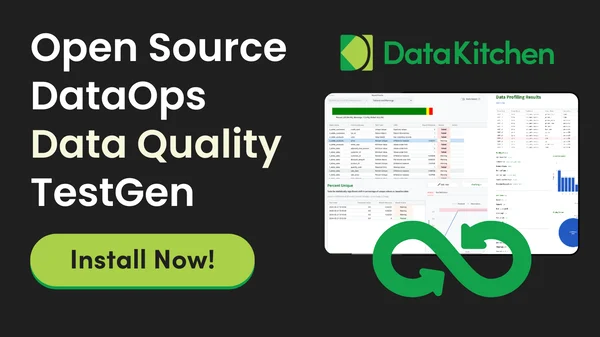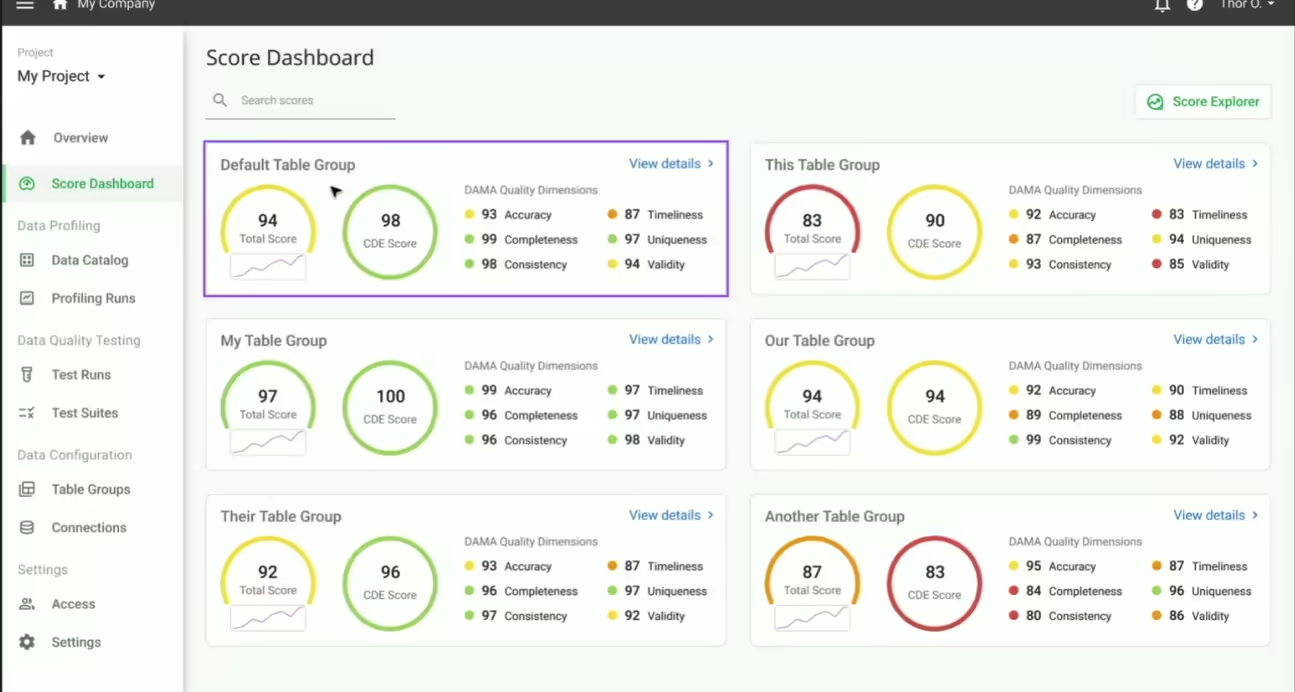The Data Quality Revolution Starts with One Person (Yes, That’s You!)
Picture this: You’re sitting in yet another meeting where someone asks, “Can we trust this data?” and the room falls silent. Sound familiar? If you’re nodding along, congratulations—you’ve just identified yourself as the perfect candidate to become your organization’s data quality champion. And here’s the secret that might surprise you: you don’t need a massive budget, a team of engineers, or executive approval to start making a real difference.
The Power of One (Empowered Individual)
Data quality transformation doesn’t begin with company-wide initiatives or sweeping organizational changes. It starts with a single empowered individual who decides that enough is enough. That person could be you, whether you’re a data engineer debugging pipeline issues at 2 AM, a data analyst tired of explaining why the numbers don’t add up, or a data leader watching your team struggle with unreliable datasets.
The magic happens when you stop waiting for permission and start leveraging your personal influence. You already have more power than you think. You know which datasets cause the most headaches, which stakeholders ask the toughest questions, and which processes break down most frequently. This insider knowledge is your superpower.

Start Small, Think Customer
Here’s where most data quality initiatives go wrong: they try to boil the ocean. Instead of attempting to fix every data problem in your organization, focus on a specific end customer with a specific pain point. Maybe it’s the marketing team that can’t trust their campaign attribution data, or the finance department that spends hours reconciling conflicting revenue reports.
Choose one customer, understand their world, and make their life measurably better. This laser focus does two things: it makes success achievable, and it creates visible wins that build momentum for bigger changes. When Sarah from marketing can finally trust her conversion rates, she becomes your biggest advocate. When the CFO stops questioning every financial report, word spreads quickly.
Embrace the DataOps Way of Life
DataOps principles aren’t just buzzwords—they’re your roadmap to sustainable change. Start small, iterate quickly, and treat every improvement as a test or experiment. Launch a simple data quality check, measure its impact, learn from what works (and what doesn’t), then iterate. This approach feels less intimidating than traditional “big bang” implementations and delivers results faster.
Think of it like renovating a house. You wouldn’t tear down every wall at once. Instead, you’d start with one room, perfect the process, then apply those lessons to the next space. Data quality improvement works the same way.
Make It Concrete, Make It Count
Vague recommendations like “improve data governance” don’t drive change. Specific, concrete remediation actions do. Instead of saying, “The customer data needs work,” try “Customer email addresses in the CRM have a 23% invalid format rate, causing 1,200 bounced emails weekly. We need to implement email validation at the point of entry and create a cleanup process for existing records.”
This specificity transforms abstract problems into actionable tasks. Your stakeholders suddenly understand exactly what’s broken, why it matters, and what needs to happen next. It’s the difference between pointing at a symptom and diagnosing the disease.
Measure Everything (And Show Your Impact)
Improving data quality without measurement is merely wishful thinking. Every change you make needs to be continually measured and monitored. This isn’t about creating busy work or generating reports that nobody reads. It’s about proving value, identifying new problems before they explode, and building credibility for future initiatives.
The beautiful irony is that improving data quality measurement often reveals more data quality issues. This isn’t a failure—it’s progress. You’re moving from unknown unknowns to known unknowns, which is exactly where you want to be.
Here’s where the magic happens: showing improvement in data quality over time through charts becomes your most powerful tool for demonstrating real contribution. A simple line graph showing data quality scores climbing from 70% to 95% over six months tells a story that no amount of verbal explanation can match. When stakeholders see that upward trend, they’re not just looking at numbers—they’re seeing the tangible impact of your work. These visual proof points transform you from someone who “works with data” into someone who “delivers measurable business value.”
Gather Your Allies
A significant challenge is, “How do I deal with all this data at scale?” You’re drowning in datasets, struggling to understand what you have, and wondering how to prioritize your efforts when everything seems broken.
But most importantly, you should focus on getting allies., “How do I influence change to improve data quality?” You’ve identified problems, but getting people to care and take action feels like pushing a boulder uphill. You know what needs to be fixed, but creating organizational momentum feels impossible. The secret here is finding your allies in making change. Pick a good customer for change, focus on solving their specific problem, and they will become part of your data quality army. When you transform someone’s work life by fixing their data headaches, you’re not just solving a technical problem—you’re recruiting a champion who will advocate for your initiatives and help you influence others.
Having lots of data is a challenge, but gaining influence and allies is the key unlock.
Your Data Quality Playbook
Ready to become your organization’s data quality champion? Here’s your action plan, distilled into five powerful strategies that you can start implementing today.
Get Going Quickly means embracing imperfection over inaction. Don’t wait for the perfect tool, the ideal dataset, or organizational alignment. Pick one small problem and solve it this week. Success breeds success, and momentum matters more than perfection in the early stages of growth.
Focus on Specific Customer Needs transforms abstract data problems into human stories. Find one person whose work day gets measurably better when you fix a specific data issue. That person becomes your case study, your advocate, and your proof point for future initiatives.
Pick The Right Type Of Data Quality Dashboard recognizes that not all customers are created equal. Your executives require diverse perspectives from your data engineers. Your business stakeholders care about different metrics than your technical teams. Match your dashboard to your audience’s needs and decision-making style.
Iterate, Improve, Influence acknowledges that data quality improvement is a cycle, not a destination. Every fix teaches you something new. Every success builds credibility. Every failure (yes, there will be failures) provides valuable learning that makes your next attempt stronger.
Give Concrete Actions moves beyond problem identification into solution implementation. Abstract recommendations gather dust in email threads. Specific, actionable steps with clear owners and deadlines create real change. Make it easy for the person doing the fix.
The Open Source Advantage
Here’s the best news: you don’t need enterprise software budgets to get started. The open source ecosystem provides powerful, proven tools that can handle serious data quality challenges. Open source is the tool that empowers you to take control of your data quality destiny. When you’re not waiting for budget approvals or navigating procurement processes, you can act on your ideas immediately. You become the empowered individual who drives change because the barriers to getting started have been removed.
Open source tools like TestGen (available at https://info.datakitchen.io/testgen) democratize data quality improvement. It comes with all the necessary parts to be productive in an hour. You can start today, experiment freely, and scale up as you prove value: no procurement processes, no lengthy vendor evaluations, no budget approval meetings. Just download, install, and start improving.

Your Data Quality Uprising Starts Now
The path from data quality frustration to data quality leadership isn’t as long as you think. It starts with one person (you) making one small improvement for one specific customer. From there, it’s about building momentum, measuring impact, and expanding your influence one success at a time.
Your organization’s data quality transformation is waiting for someone to take the first step. The tools are available, the methodologies are proven, and the need is obvious. The only question remaining is whether you’re ready to be the empowered individual who makes it happen.
The revolution starts with you. What are you waiting for?








